MILWAUKEE — Wisconsin Gov. Tony Evers has included $45 million for expanded Amtrak Hiawatha service between Milwaukee and Chicago in his proposed budget, Wisconsin Public Radio reports.
The money would match federal grants to fund route improvements needed before Hiawatha service could be expanded to 10 round trips daily from the current seven.
State Department of Transportation Secretary Craig Thompson told the radio station that eight projects need to be completed before service can be expanded. One of those, improvements at the Milwaukee airport station, is already being funded by a federal grant announced in February. [See “FRA announces $56 million in rail improvement grants,” Trains News Wire, Feb. 8, 2019.]
Efforts to increase Hiawatha service are being slowed by the Chicago suburbs of Lake Forest and Glenview, which are fighting the addition of a siding needed for the expanded service, citing concerns over noise and possible additional freight traffic. [See “Illinois slows plans to expand Hiawatha service,” Trains News Wire, Sept. 11, 2018.]





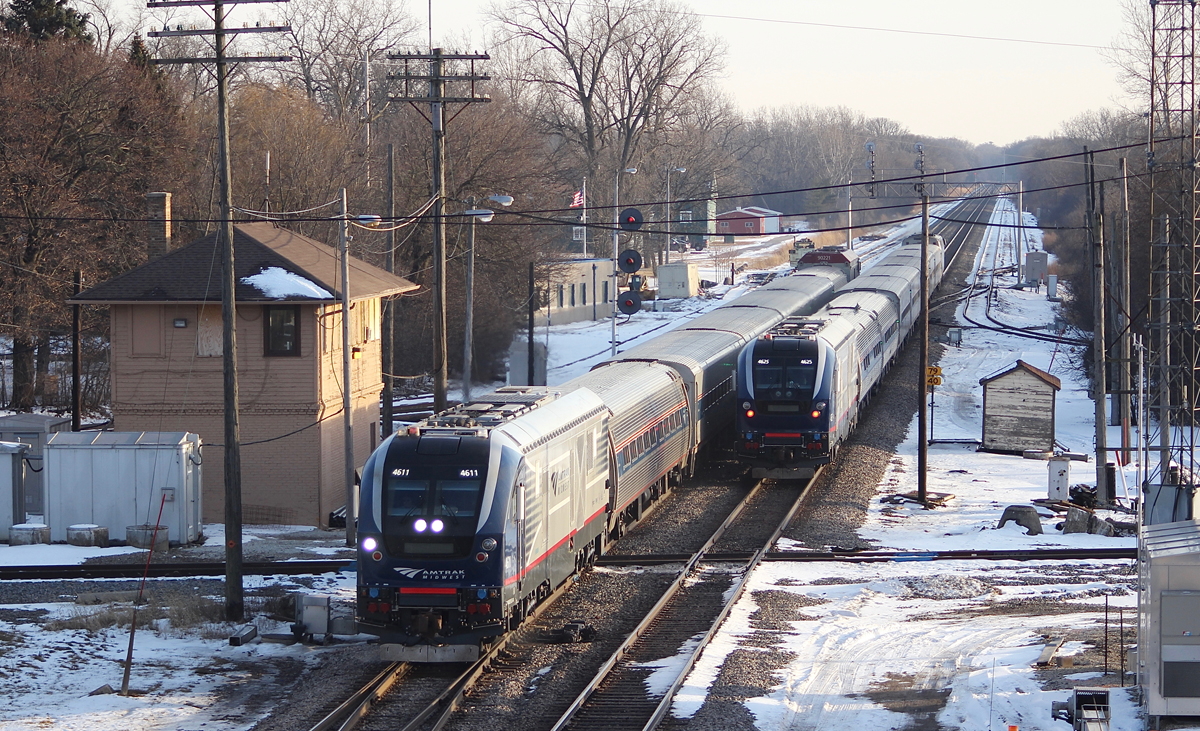

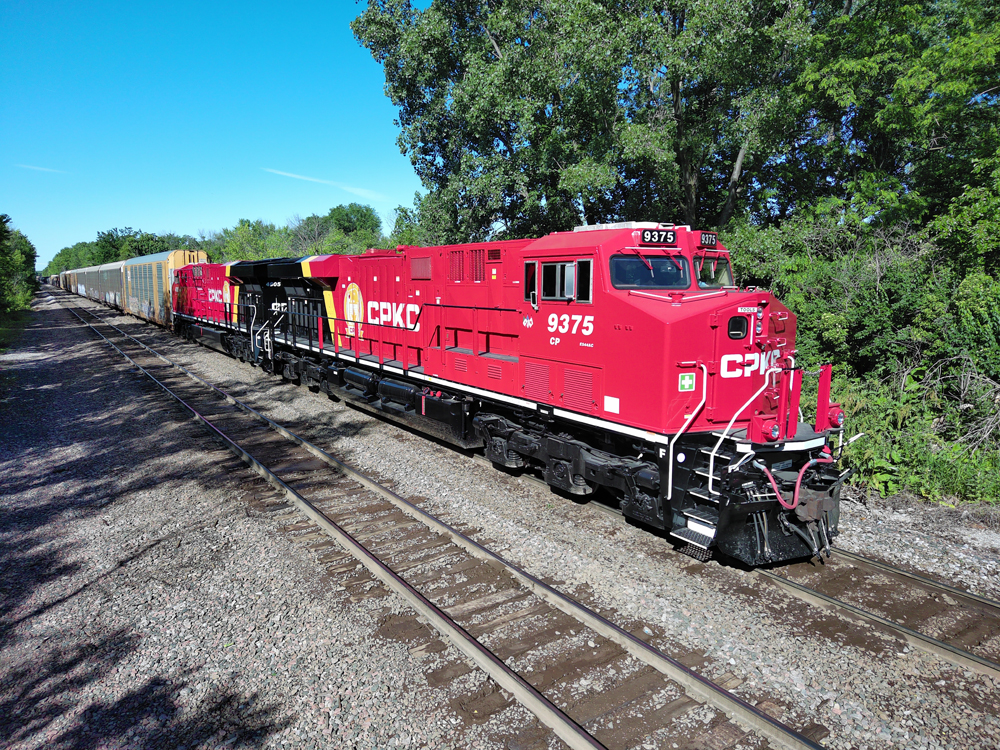
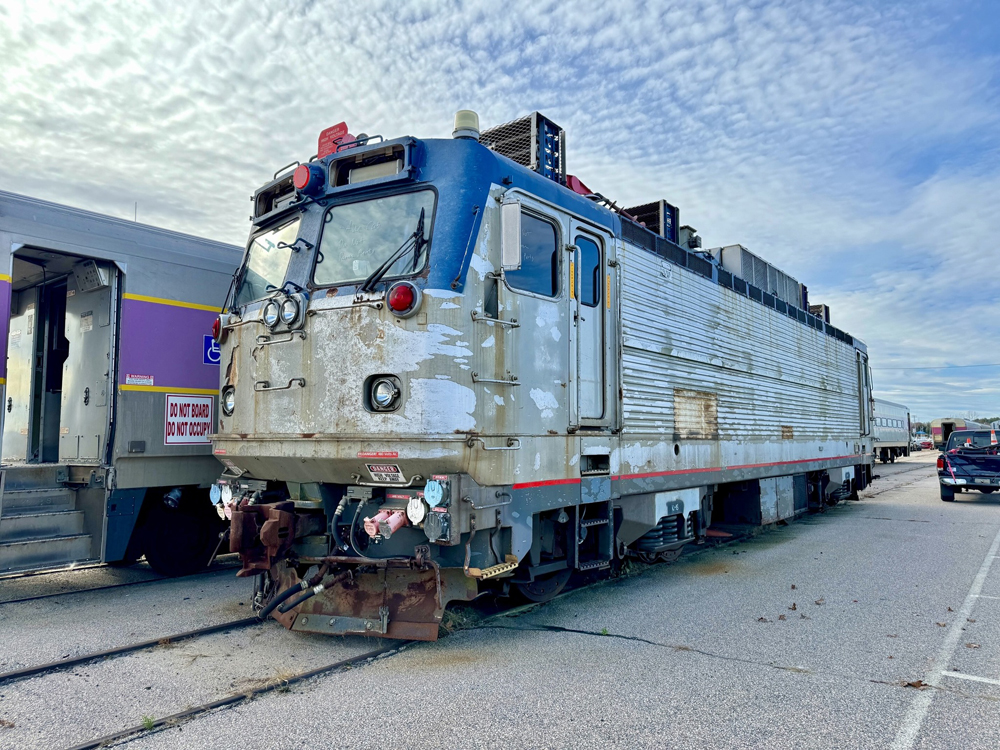
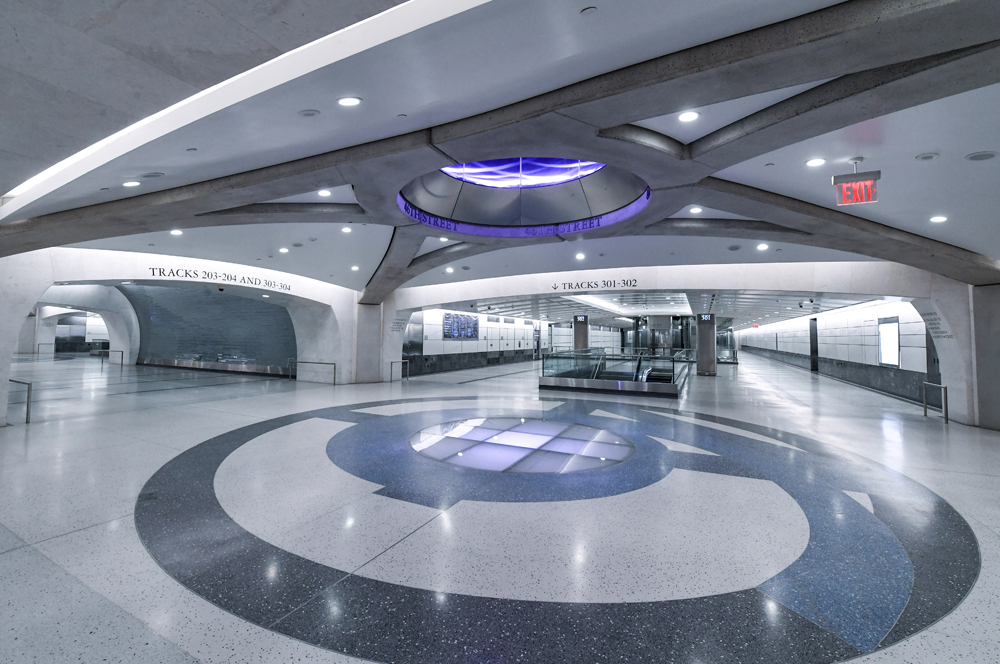
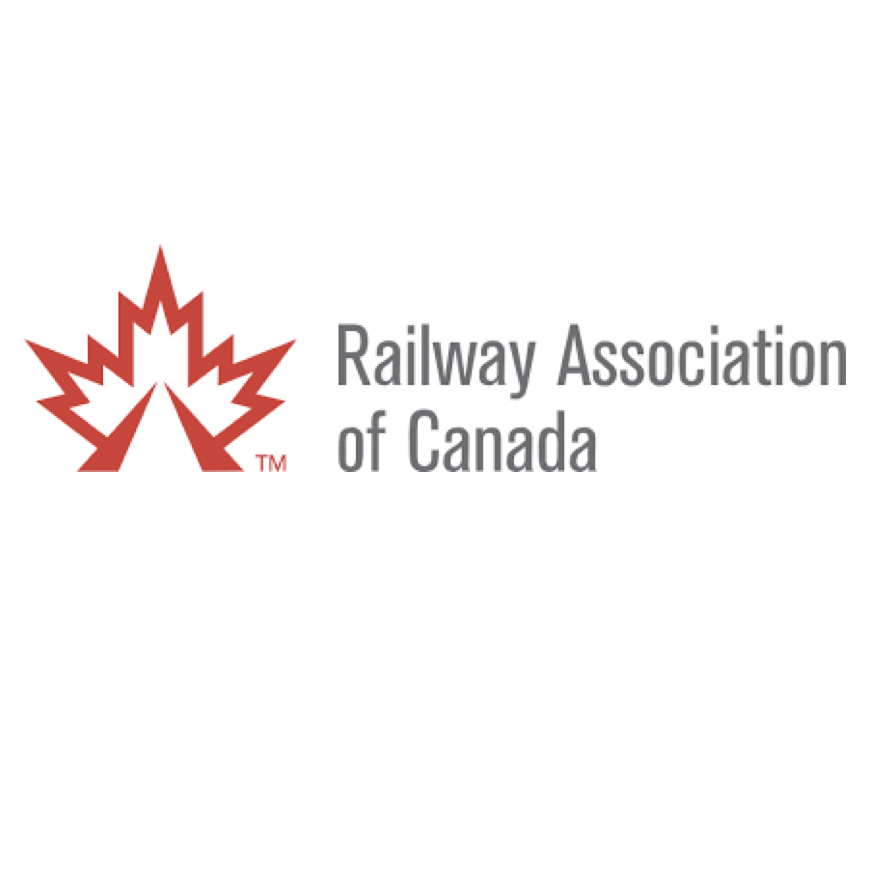




The Glenview siding serves as a 10,000′ holdout for both Techny and Deval that will be less likely to block the UP Milwaukee Subdivision (former CNW New Line); but it probably should be 15,000′ long. A second holdout is needed at Roundout that would entail lengthening one of the sidings on the CP north of the junction. An Atkinson Rd overpass would allow the holdout to begin at Rondout; but could begin north of Atkinson Rd at the cost of distance and a minute to Techny.
CURTIS _ Update, the Hiawatha is good for reverse commuting for normal business travel. It won’t due for event travel. There’s no late evening departure SB from MKE. Convention events are scheduled (for TV) well into the evening.
Curtis – I think you’re onto something. The Hiawatha is a commuter line – 89 miles long, with a schedule that allows commuting in both directions. I’d not be the least surprised if it turns out the portfolio which the city presented to DNC included the Hiawatha as part of the proposal.
Don’t be surprised if many attendees at the upcoming Democratic Party convention stay in Chicago and commute on the Hiawatha due to the paucity of hotel rooms in Milwaukee. Perhaps the trolley line should have been built to the new, tax-payer funded basketball arena, which will be the convention site.
Single-level cars may look nice, but unless they have the low-level remote doors like NJT and MBTA Horizon cars, boarding and alighting from only a few doors with manual traps will continue to cost dwell time, maybe five minutes, with only three intermediate stops.
The issue isn’t so much community population along the UPN as it is reach, overlapping commutersheds, and parking, often restricted or prioritized for community residency. Even so, I was surprised to see that UPN weekday ridership was 34,000 compared to 22,000 for MDN. I thought it was the other way around. Limited commuter parking competes with downtown shopping and business parking along the UPN. CMAP rates UPN trains as being overcrowded
While I’m sure increased Hiawatha frequencies will be welcome, I doubt they will contribute significant ridership. The most pressing need is for half-hour peak service. While that is not possible between Morton Grove and Rondout without the cost and dislocation of a third main track for just 4-6 trains, it could be realized with combined Metra Amtrak trains with express Metra stops at Lake-Cook and Lake Forest and better access to Lake County employment destinations for Wisconsin residents.
The time would be a little longer, :102-minutes with three additional stops. as now with #330 and #339 and still be competitive with rushhour driving time. Two new stations would be desirable for Kenosha and Gurnee; and morning sb and afternoon-evening nb trains would stop at Lake Forest and Lake-Cook while morning nb and afternoon-evening sb trains would stop at Glenview and Lake Forest. This would mitigate the need for the KRM service over the UP. The UP may go near the downtowns along the lakefront; but it isnt as competitive to the newer development along I-94 and farther west. The CP offers a larger commutershed reach in Lake, Kenosha, and Racine County than the UP would.
I estimate that three sets of trains with six Amtrak and five Metra push-pull gallery cars and an SC-44 would be adequate for as many as 606 Amtrak passengers in reclining seats and 716 Metra passengers without wheelchairs or carry-on bicycles. This would be a much better utilization of line capacity than separate trains. A coffee bar at stations would substitue for a cafe car
Well said Mr. Landey.
Having worked in health care (EMS and hospital ERs) for 19 years, I have met all of the people Mr. Landey mentions in his post (and not just the last paragraph). I also know that you can’t fairly judge a person’s actions without knowing what’s behind them, however plain their motivations might be to a stranger. That applies also to Mr. Landey himself. I may disagree with many positions he expresses, but without personally knowing how & why he came to hold them I’m in no position to fault him for holding them. I only hope he’ll extend the same courtesy to those with whom he disagrees.
Just like pre-Amtrak days, the frequency of Metra-UPN rushhour services and closely spaced stations precludes intercity service. There is nothing wrong with the tracks as far as Kenosha; but St.Francis was simplified and reconfigured with a slower alignment with highway construction.
A third track from Clybourn (Deering?) in Chicago to Central St., Evanston was removed a decade after a number of local Chicago stations were closed, reducing the need for a third track so far south. An irregular skip-stop service was instituted to speed service to northern suburbs; but the largest stations are on the south end, unlike other lines.
Thank you Mr. Landey and Mr. Erickson. It is difficult to show sympathy to those people who want to live in a self-centered life with little to no regard for others. If they don’t want train noise, work with the railroad to make going through their little town a quiet zone.
How about an extension to the Brewers stadium?
I see that sarcasm doesn’t resonate in these here parts. I’ll be more literal next time.
Compassion? I’d say Mr. Landey displays an abundance of compassion in his last paragraph where he describes a number of situations that really warrant concern. Yes, those individuals deserve all the compassion (and assistance) we can give. In general, I have no sympathy or compassion for any NIMBY (or BANANA) whiner. All I would like to say to them is to paraphrase John Galt: “Get the h___ out of my (our) way.”
Well said, Mr Landey!
I agree with you George, though I would say “compassion”, or maybe “empathy”. Mr. Landey certainly doesn’t lack in passion from what I have read here and elsewhere.
Charles – I think your arguments would carry more weight if you were a bit less cold and bloodless and showed more passion. Just a suggestion.
Everybody hates NIMBY’s until it’s their neighborhood.
Maybe if we had more NIMBY’s in the 1950’s we wouldn’t have so many freeways built through cities and the trains would be more useful now. But, everybody loves destroying other people neighborhoods for their own convenience.
CHRISTOPHE – there are two parallel UP lines all the way, the “freight” line more inland, and the “passenger” line along Lake Michigan. The latter has Metra up to Waukegan and some Metra trains up to Kenosha (Wisconsin).
Neither is suitable for Amtrak, without total rebuilding, in the northerly four counties (Lake County Illinois and Kenosha, Racine and Milwaukee Counties Wisconsin).
In the southernmost county, Cook County there would be the same problems or worse as with CP Rail.
The current Hiawatha route on CP Rail is a dream in the northerly four counties. It misses the cities of Kenosha and Racine (being more inland), serving (or not serving) both with the park-ride at Sturtevant in Racine County.
Would the UP ex CNW line be better in any way? I believe it has more on-line population than the ex Milwaukee. Is the alignment as good?
True, time probably ultimately could defeat the NIMBYs, but at what unnecessary expense? And that seems to be the NIMBY game plan in general — just keep delaying and delaying, as the time and money mount up to the point that the other side decides it’s just not worth it.
Sooner or later, the RRs almost always win. Grandfather clause is real and legal. Its only a matter of time and time is on the RRs side.
One small piece of agreement with the NIMBY’s, this corridor (along with other Chicagoland Metra corridors) is desperately short of grade separations and desperately long on highway traffic.
The downside of commuter rail is the automotive congestion at the stations (which burns energy both for transferring rail patrons and others caught in the traffic jams) when trains arrive, and the congestion at grade crossings (which also burns energy). In this corridor only a few main roads such as Lake-Cook Road (which has its own congestion issues) are grade separated. Towns like Glenview, Northbrook, Deerfield and Lake Forest are wonderful places, but OMG the traffic! When I drive in this area (as opposed to whizzing through on the Hiawatha) I wonder how anyone could live there.
Indeed Mr. Landey.. Let them move
I don’t have much sympathy for NIMBYs either. That said, I don’t think the objections I’ve heard were about the four extra Hiawathas as much as idling freight locomotives holding for them.
Still it is an active and busy railroad corridor, but I did want to get some accuracy about the specifics of the objection as I seem to recall it.